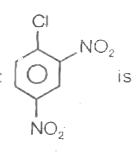A : Addition of HCN in alkene is a type of electrophilic substitution reaction.
R : In first step, H3O+ attacks on double bond
If both Assertion’ & Reason are true and the reason is the correct explanation of the assertion, then mark'(1).
If both Assertion. & Reason are true but the reason is not the correct explanation of the ’ assertion, then mark (2).
If Assertion is true statement but Reason is false, then mark (3). .
If both Assertion and-Reason are false statements, then mark (4)
Step by step video & image solution for A : Addition of HCN in alkene is a type of electrophilic substitution reaction. R : In first step, H3O+ attacks on double bond by Chemistry experts to help you in doubts & scoring excellent marks in Class 12 exams.
Updated on:21/07/2023Topper's Solved these Questions
- ORGANIC CHEMISTRY : SOME BASIC PRINCIPLES AND TECHNIQUES Book:AAKASH INSTITUTE ENGLISHChapter:ORGANIC CHEMISTRY : SOME BASIC PRINCIPLES AND TECHNIQUES Exercise:Assignment(SECTION C)
Explore 73 Videos
- MOCK_TEST_20Book:AAKASH INSTITUTE ENGLISHChapter:MOCK_TEST_20Exercise:EXAMPLE
Explore 29 Videos
- ORGANIC CHEMISTRY: SOME BASIC PRINCIPLE AND TECHNIQUESBook:AAKASH INSTITUTE ENGLISHChapter:ORGANIC CHEMISTRY: SOME BASIC PRINCIPLE AND TECHNIQUESExercise:TRY YOURSELF
Explore 28 Videos
Similar Questions
Knowledge Check
Which of the following alkenes is most reactive towards electrophilic addition reaction?
AH2C=CH2BCH3−CH=CH2C DH2C=CH−Cl
DH2C=CH−ClRelative stability among conjugated dienes (i), alkenes (ii), alkynes (iii), towards electrophilic addition reaction in the order :
A(i)>(ii)>(iii)B(i)>(iii)>(ii)C(iii)>(ii)>(i)D(ii)>(iii)>(i)
Give reasons for the following:
(i) tert-buty lbenzene does not give benzonic acid on treatment with acidic KMnO4.
(ii)Normally, benzene gives electrophilic substitution reaction rather than electrophilic addition reaction although it has double bond.
View SolutionArrange reactivity of given compounds in decreasing order for electrophilic substitution reaction
1. Furan
2. Pyrrole
3. Thiophene
View SolutionAddition of HCl to an alkene proceeds in two steps. The first step is the attack of H+ ion to
 portion which can be shown as
portion which can be shown as
View SolutionWhy do alkenes undergo electrophilic addition reactions ? Discuss the mechanism of electrophilic addition reactions of alkenes.
View SolutionIdentify the incorrect statement / statement :
(i) Alkynes are more reactive than alkenes towards electrophilic addiction reaction
(ii) Alkynes are less reactive than alkenes towards electrophilic addiction reaction
(iii) Alkynes decolourise Br2 water
(iv) Addition of HBr to alkenes in presence of peroxide proceeds via Markownikoff's rule
View SolutionIn the following questions, a statement of assertion (A) is following by a statement of reason (R )
 is more reactive towards nucleophilic substitution reaction than
is more reactive towards nucleophilic substitution reaction than 
R: NO2 group is electron withdrawaing so decreases the double bond of C-CI bond .
View Solution